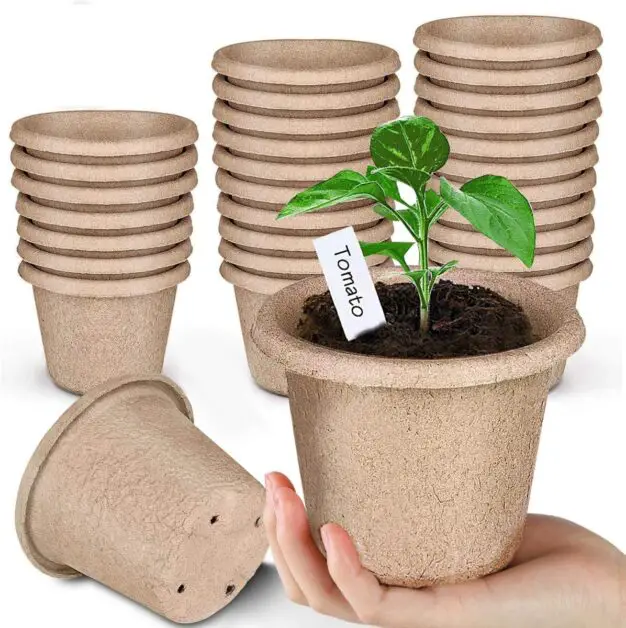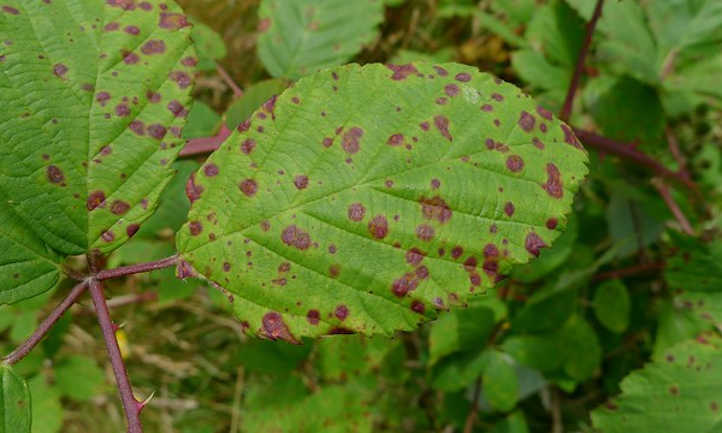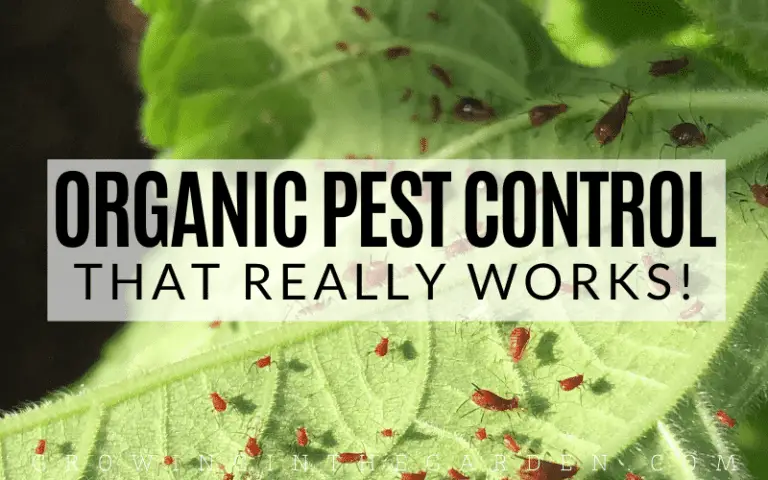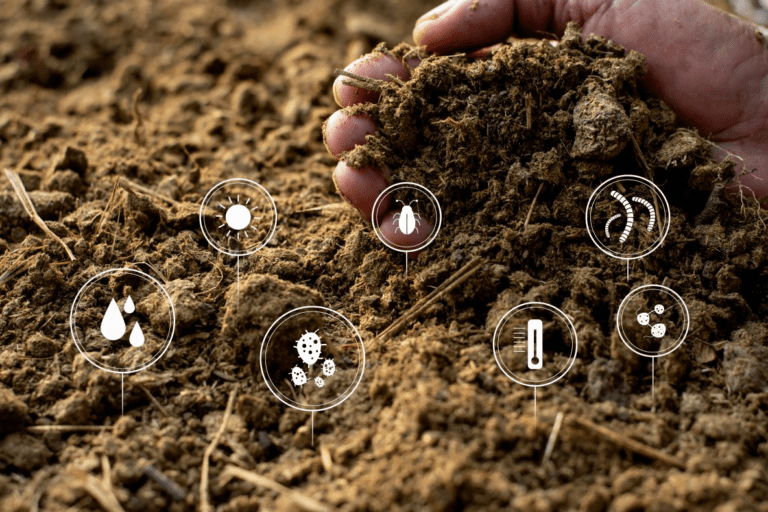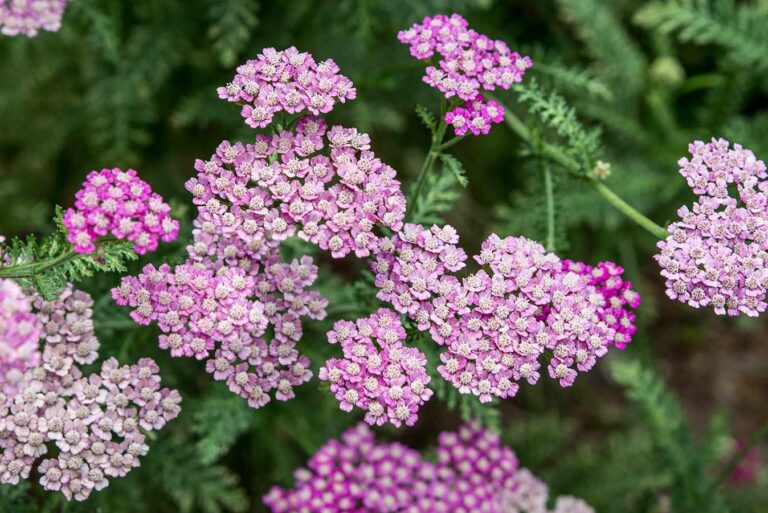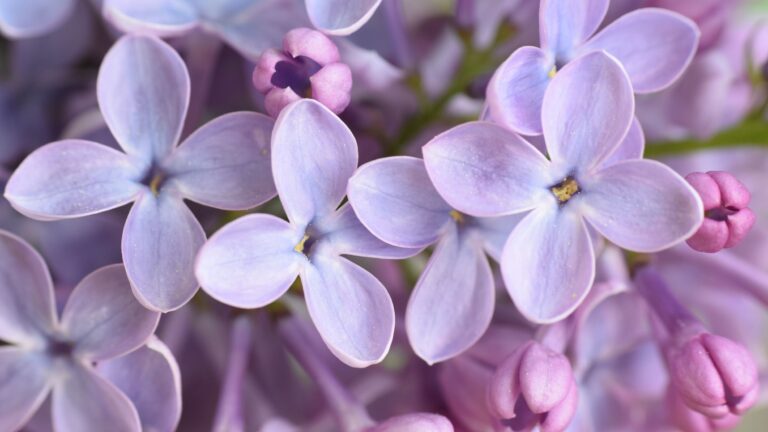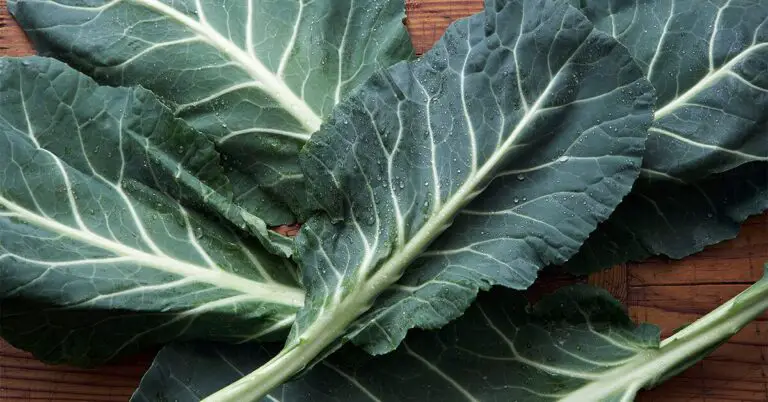Peat Pots: Biodegradable Planters for Sustainable Gardening
If you are looking for a way to start your seeds, grow your plants, and protect the environment at the same time, you might want to consider peat pots. Peat pots are biodegradable planters made from natural materials such as peat moss, wood pulp, and coconut fiber. They are ideal for sustainable gardening because they reduce waste, conserve water, and prevent root damage.
In this article, we will explain the benefits of peat pots, how to use them, and where to buy them. We will also share some tips and tricks to make the most of your peat pot experience. Whether you are a beginner or a seasoned gardener, peat pots can help you achieve your gardening goals while being eco-friendly.
So, what are you waiting for? Grab some peat pots and get ready to grow some amazing plants!
Table of Contents
The Environmental Impact of Traditional Planters
Traditional planters, such as plastic and ceramic pots, have long been the go-to choice for gardeners. However, it is important to consider the environmental impact of these conventional options. Plastic planters, for instance, are made from non-renewable resources and can take hundreds of years to decompose. Ceramic planters, on the other hand, require intensive energy and resources in their production.
In addition to the manufacturing process, traditional planters also pose challenges when it comes to disposal. Plastic pots, for example, often end up in landfills, contributing to the global plastic waste problem. Ceramic pots, although more durable, can also end up in landfills if they break or if gardeners no longer have a use for them. This accumulation of waste hampers efforts towards a more sustainable future. As gardeners, it is crucial that we explore alternative options that minimize our environmental impact and help preserve our planet for future generations.
| Material | Environmental Impact | Degradation Time | Benefits to Plants |
|---|---|---|---|
| Clay | Low impact, natural and renewable material | Long-lasting, but can crack or chip in extreme temperatures | Good drainage and aeration, keeps roots cool, prevents over-watering |
| Ceramic | Moderate impact, requires high energy and water consumption to produce | Durable, but can break if dropped or frozen | Retains moisture and heat, comes in various colors and shapes, adds aesthetic appeal |
| Plastic | High impact, made from non-renewable petroleum and releases toxins when burned | Slow to degrade, can last for years but also prone to fading and cracking | Lightweight, inexpensive, easy to clean, available in many sizes and designs |
| Fibre | Low impact, made from natural or recycled materials such as coconut coir, paper pulp, or wood chips | Biodegradable, can last from a few months to a few years depending on the material | Promotes root health and air pruning, reduces transplant shock, conserves water |
| Metal | Moderate to high impact, depends on the source and type of metal | Long-lasting, but can rust or corrode over time | Reflects heat and light, adds a rustic or modern look, suitable for hanging baskets |
| Peat | Low impact, made from decomposed organic matter such as peat moss | Biodegradable, can last from a few weeks to a few months | Reduces waste, prevents root damage, improves soil structure, ideal for seed starting |
| Grow Bags | Low impact, made from breathable fabric such as felt or canvas | Reusable, can last for several seasons with proper care | Enhances root growth and air pruning, prevents overheating, easy to move and store |
Understanding the Biodegradability of Peat Pots
Peat pots have gained popularity as an eco-friendly alternative to traditional planters, but understanding their biodegradability is essential to make informed choices for your gardening needs. Peat pots are typically made from compressed sphagnum peat moss, which is an organic material derived from decomposed plants. The natural composition of peat pots allows them to break down and decompose over time, minimizing their environmental impact.
Peat pots are designed to biodegrade when exposed to moisture and microorganisms in the soil. As the plants grow and develop strong root systems, the peat pots gradually decompose, allowing the roots to penetrate the soil. This process eliminates the need to remove the plant from the pot during transplantation, reducing the risk of transplant shock and promoting healthier root development. Moreover, the decomposed peat acts as a natural fertilizer, enriching the soil with organic matter and nutrients. This natural biodegradability feature makes peat pots an environmentally friendly choice for gardeners who prioritize sustainable practices.
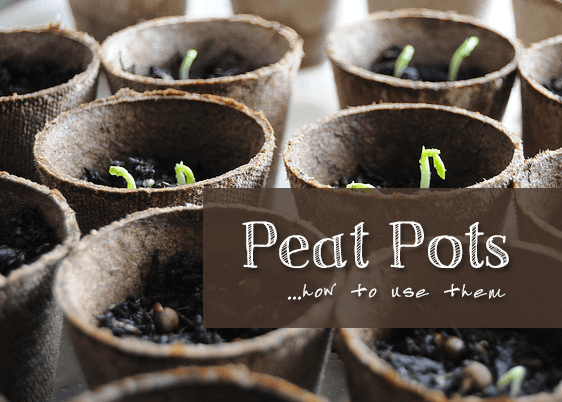
How Peat Pots Promote Healthy Plant Growth
Peat pots have become popular among gardeners due to their ability to promote healthy plant growth. One of the key ways in which peat pots contribute to plant health is through:
1. Ability to regulate moisture levels. The porous nature of peat allows excess water to drain away, preventing water-logging and ensuring that the plant’s roots have access to the oxygen they need. At the same time, peat pots also retain enough moisture to keep the soil evenly hydrated, avoiding the risk of dehydration.
2. Peat pots offer natural insulation for plant roots. The peat material acts as a barrier against temperature fluctuations, providing a stable and optimal environment for root development. This insulation can be particularly beneficial during the early stages of plant growth, helping young seedlings establish strong and healthy root systems. The result is robust and thriving plants that are better equipped to withstand the challenges of their environment.
Overall, the use of peat pots in gardening can greatly contribute to healthy plant growth. Their ability to regulate moisture levels and provide insulation for plant roots offers significant advantages for successful cultivation. By utilizing these eco-friendly pots, gardeners can optimize their growing conditions and enjoy the satisfaction of vibrant and flourishing plants.
Choosing the Right Size and Shape of Peat Pots for Your Garden
When it comes to choosing the right size and shape of peat pots for your garden, there are a few factors to consider. The size of the pot should match the size of the plant you’re planning to grow. Too small of a pot can restrict the root growth and lead to stunted plants, while a pot that is too large can result in wasted space and unnecessary water usage. It’s important to find the right balance.
In addition to size, the shape of the peat pot can also play a role in the success of your plants. Some plants, such as those with deep taproots, may benefit from a taller pot that allows for ample root growth. Others may do well in wider, shallower pots that provide more surface area for root spread. Understanding the needs of your specific plants can help guide your decision-making process when it comes to selecting the appropriate pot size and shape. Remember, a well-suited peat pot can provide the ideal environment for your plants to thrive and flourish in your garden.
The Process of Planting in Peat Pots
Planting in peat pots is a straightforward process that allows for easy transplantation of seedlings into your garden. To begin, gather your peat pots and fill them with a suitable seed-starting mix, ensuring that the soil is moist but not waterlogged. Make a small indentation in the center of the soil, and place one or two seeds in the hole, covering them with a thin layer of soil.
Next, provide the appropriate conditions for germination by placing the peat pots in a warm and well-lit area, such as a greenhouse or a sunny windowsill. Monitor the moisture level of the soil, ensuring it remains consistently damp but not saturated. Depending on the plant species, germination can take anywhere from a few days to several weeks. Be patient and allow the seeds time to sprout.
As the seedlings grow, it is crucial to provide them with adequate light and water. Thin out any weaker seedlings, leaving only the strongest ones in each peat pot. When the seedlings have developed their true leaves and are approximately two to three inches tall, they are ready to be transplanted into the garden. Gently lift the seedlings from their peat pots, being careful not to damage their delicate roots. Dig a hole in the desired location in your garden, and place the seedling into the hole, firming the soil around it to ensure stability. With the right care and attention, your plants will thrive in their new home, thanks to the easy and efficient process of planting in peat pots.
Tips for Watering and Maintaining Plants in Peat Pots
Proper watering and maintenance are crucial for the health and vitality of plants grown in peat pots. These tips will help you ensure optimal growth and reduce the risk of overwatering or underwatering your plants.
By following these tips, you can ensure that your plants in peat pots receive the proper hydration and maintenance they need to thrive. Implementing these practices will not only support their growth but also reduce the risk of common issues associated with overwatering or underwatering. With careful attention and a mindful approach, you can effectively nurture your plants to reach their full potential.
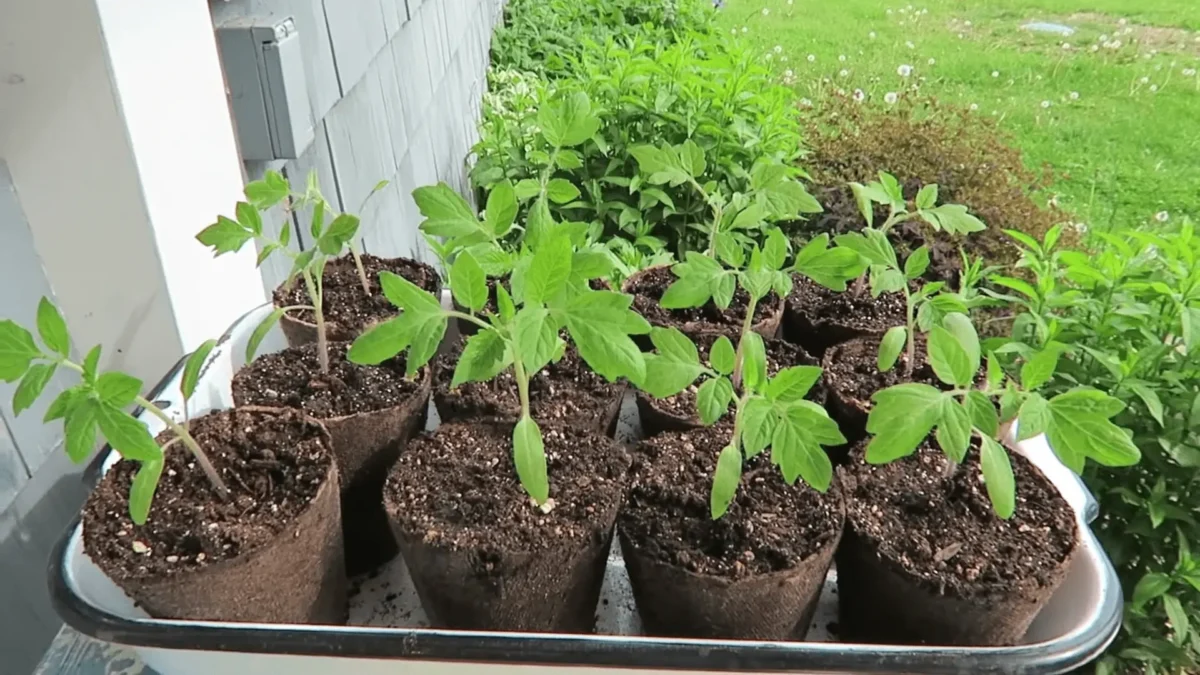
The Benefits of Air Pruning in Peat Pots
Air pruning is a technique that offers numerous benefits when using peat pots for gardening. This process stimulates better root development and overall plant growth by promoting the formation of a dense, fibrous root system. Unlike traditional planters, which can cause roots to circle around the container and become root-bound, peat pots with air pruning capabilities redirect root growth.
When plants are grown in air-pruning peat pots, the roots encounter air when they reach the container’s edge. This air exposure causes the roots to stop growing in a circular pattern and instead stimulates the growth of secondary roots. These secondary roots then branch out and fill the available space within the peat pot, ensuring optimal nutrient uptake and water retention.
The result of air pruning is a robust root system that enhances a plant’s ability to access water, nutrients, and oxygen. This increased nutrient and water absorption leads to healthier and more vigorous plants, with improved resistance to diseases and adverse environmental conditions. Additionally, air pruning reduces the risk of plants becoming root-bound, allowing for successful transplantation into larger containers or the garden. The benefits of air pruning make it a valuable technique for gardeners seeking to maximize plant growth and productivity.
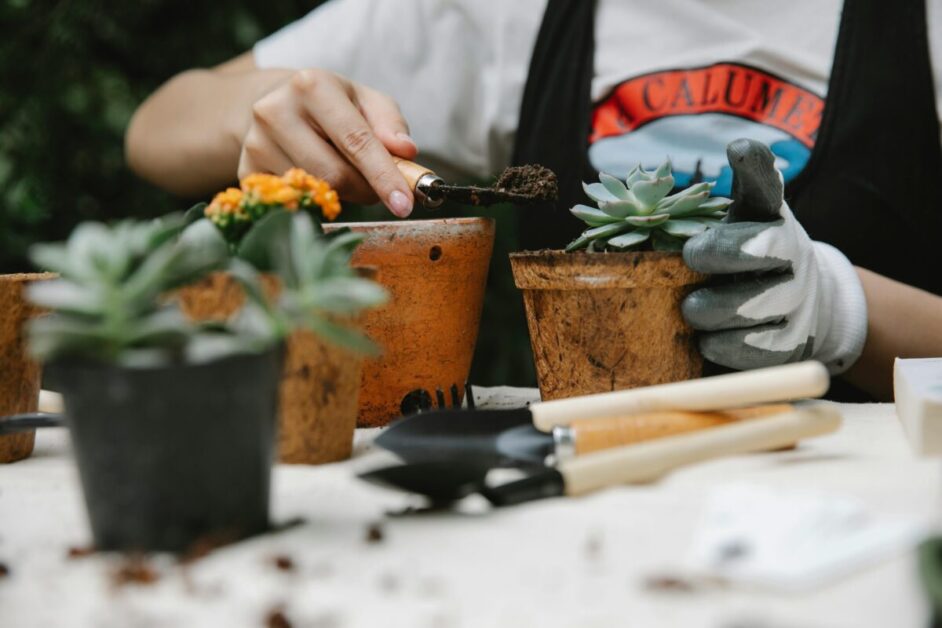
Comparing Peat Pots to Plastic and Ceramic Planters
Plastic and ceramic planters have long been popular choices for gardeners, but when compared to peat pots, they have certain drawbacks. One significant disadvantage of plastic planters is their lack of breathability. Plastic containers can trap moisture, leading to excessive moisture levels that may cause root rot and other fungal diseases. In contrast, peat pots allow for better airflow, preventing issues related to excessive moisture buildup. This increased breathability can promote healthy root development and overall plant growth.
Ceramic planters, on the other hand, are known for their durability and aesthetic appeal. However, they tend to be much heavier and more cumbersome than peat pots. This heaviness can make them challenging to move and rearrange in the garden. Peat pots, being lightweight and easy to handle, offer gardeners greater flexibility when it comes to arranging and repositioning their plants. Additionally, while ceramic planters may crack or break over time, peat pots are biodegradable and can be directly planted into the soil, eliminating the need for transplanting and minimizing root disturbance.
When considering the choice between plastic or ceramic planters and peat pots, it is crucial to consider factors such as breathability, weight, and ease of use. Peat pots provide a practical alternative, allowing for better airflow and root development while maintaining convenience and flexibility in the garden. In the next sections, we will delve deeper into the advantages of peat pots and explore different types available in the market.
Let’s compare peat pots, plastic pots, and ceramic planters to understand their differences and benefits:
| Aspect | Peat Pots | Plastic Pots | Ceramic Planters |
|---|---|---|---|
| Material | Made from compressed peat moss and other organic materials. | Lightweight, sturdy, and flexible. | Porous clay or glazed ceramic. |
| Water Retention | Retain moisture well. Ideal for plants that prefer consistent dampness. | Varies; some plastic pots retain moisture, while others allow faster drying. | Unglazed ceramic pots allow water to escape, while glazed ceramic pots retain moisture. |
| Aesthetics | Simple and natural appearance. | Available in various colors and designs. | Attractive and elegant. Suitable for indoor decor. |
| Durability | Biodegradable and break down over time. | Durable and long-lasting. | Long-lasting if not dropped or left outdoors in extreme cold. |
| Weight | Lightweight. | Lightweight. | Heavier than plastic. |
| Drainage | Good drainage. | Requires drainage holes. | Requires drainage holes. |
| Plant Support | Suitable for smaller plants. | Suitable for various plant sizes. | Better at supporting larger plants. |
| Cost | Affordable. | Affordable. | Often more expensive. |
Remember to choose the type of planter that best suits your plant’s needs and your aesthetic preferences!
Exploring Different Types of Peat Pots in the Market
When it comes to exploring different types of peat pots in the market, gardeners have a wide range of options to choose from. Peat pots differ in terms of size, shape, material composition, and overall quality. Some popular types include round peat pots, square peat pots, and biodegradable peat pots.
Round peat pots are often preferred for their simplicity and ease of use. Their circular shape allows for efficient spacing and arrangement of plants. Square peat pots, on the other hand, offer a more compact and space-saving option for gardeners with limited space. Both round and square peat pots are typically made from compressed peat moss, which is highly biodegradable and provides an ideal environment for plant root growth.
Another type of peat pot gaining popularity is the biodegradable peat pot. These pots are designed to break down naturally and decompose in the soil, reducing waste and minimizing the need for transplanting. Made from materials such as coconut coir or pressed paper, biodegradable peat pots offer an environmentally friendly alternative to traditional plastic planters.
One product which i can recommend based on my personal experience is the Homenote peat pots. I bought these peat pots to start some vegetable and flower seeds indoors. I was impressed by the quality and quantity of the pots. They are sturdy, well-shaped, and have drainage holes at the bottom. They also come with 20 plant labels, which are very handy.
- They are biodegradable and eco-friendly
- They prevent root shock and transplant stress
- They promote healthy root growth and air pruning
- They are affordable and durable
- They dry out faster than other pots and need more frequent watering
- They can break apart if handled roughly or watered too forcefully
- They can attract mold or fungus if kept too wet or humid
The pots are easy to use and transplant. I just filled them with potting soil, planted the seeds, and watered them regularly. The pots kept the soil moist and the seeds germinated quickly. When the seedlings were ready, I planted the whole pots into the ground. The pots decomposed naturally and did not disturb the roots.
Overall, I am very happy with these peat pots and would recommend them to anyone who wants to start seeds in a natural and sustainable way. They are great for beginners and seasoned gardeners alike.
With so many options available, it’s important for gardeners to consider their specific needs and preferences when choosing peat pots. Factors such as plant type, space limitations, and environmental impact should all be taken into account. By exploring the different types of peat pots in the market, gardeners can find the ideal option that best suits their gardening goals and aspirations.
How to Prepare Peat Pots for Planting
Preparing peat pots for planting is an essential step in ensuring the success of your gardening endeavors. Before you begin, it is crucial to understand that peat pots are a biodegradable option made from compressed peat moss or other organic materials. They provide a sustainable alternative to plastic or ceramic planters, as they break down naturally in the soil over time.
To prepare peat pots for planting, start by moistening them thoroughly. This step is vital as it allows the peat pots to absorb water, which creates a favorable environment for the roots of your plants. Place the peat pots in a tray or container and add water until they are fully saturated. Let them sit for a few minutes, allowing the excess water to drain off.
After moistening the peat pots, it is a good practice to add a high-quality potting mix tailored for your specific planting needs. Fill each peat pot with the potting mix, making sure to leave enough space for your seeds or seedlings. Gently press the soil down to achieve good contact between the potting mix and the peat pot.
By adequately preparing your peat pots for planting, you create an optimal environment for your plants to thrive. This ensures that they receive adequate moisture and nutrients as they establish their roots. In the next section, we will explore the process of planting in peat pots and provide you with useful tips to maximize the growth and health of your plants. Stay tuned!
Transplanting Seedlings from Peat Pots to the Garden
Transplanting seedlings from peat pots to the garden is an important step in the gardening process that requires care and attention to ensure the young plants thrive in their new environment. Before moving the seedlings, it’s crucial to prepare the garden bed by loosening the soil and removing any weeds or debris. This provides a welcoming space for the seedlings to establish their roots and grow.
When it comes to transplanting, timing is key. The seedlings should be strong and robust, with a well-developed root system. Typically, this occurs when the seedlings have produced at least two sets of true leaves. It’s important not to rush this step, as transplanting too early can cause stress and hinder the growth of the plants.
To remove the seedlings from their peat pots, gently squeeze the sides of the pot to loosen the soil. Then, hold the seedling at the base of the stem and carefully lift it out, taking care not to damage the delicate roots. If the roots are tightly packed, you can use a small tool, such as a pencil or a stick, to gently tease them apart.
Before placing the seedlings in the garden bed, it’s crucial to water them thoroughly. This helps to ensure that the soil around the roots is moist and promotes a smooth transition from the peat pot to the garden soil. Dig a hole in the garden bed that is slightly larger than the size of the peat pot. Gently place the seedling into the hole, making sure that the top of the root ball is level with the soil surface. Finally, carefully backfill the hole, firming the soil gently around the base of the plant to provide support.
Transplanting seedlings from peat pots to the garden can be a rewarding experience for gardeners. It allows for the growth and development of healthier, stronger plants. By following these guidelines and providing the appropriate care, you can ensure the successful transition of your seedlings, setting them up for a fruitful and bountiful harvest.
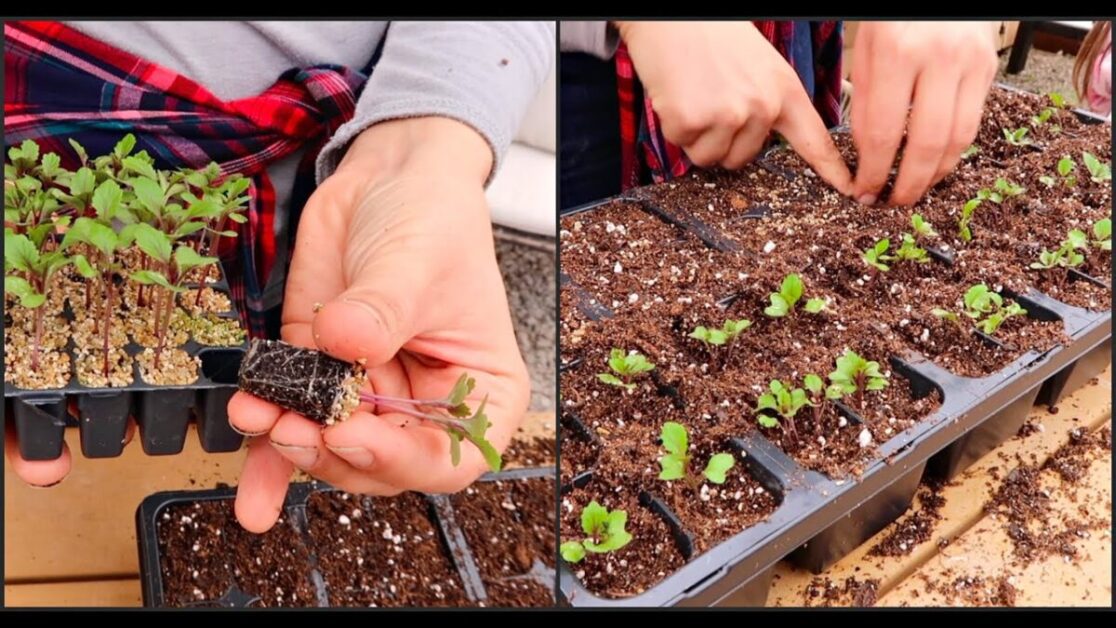
Disposing of Peat Pots: Best Practices for Minimal Environmental Impact
When it comes to disposing of peat pots, it is important to follow best practices to minimize the environmental impact. Peat pots are often touted as an eco-friendly alternative to plastic planters due to their biodegradability. However, improper disposal can still contribute to landfills and negatively affect the environment.
The first step in responsible disposal is to remove any non-biodegradable components, such as labels or plastic rim inserts, before composting the peat pots. It is important to check the manufacturer’s instructions to ensure the pots are indeed compostable. If composting is not an option, some local recycling programs accept peat pots as part of their yard waste collection. By diverting peat pots from landfills and utilizing their organic matter, we can contribute to a more sustainable gardening practice.
The Cost-effectiveness of Using Peat Pots for Gardening
Peat pots have gained popularity among gardeners due to their many advantages, including their cost-effectiveness. When compared to traditional planters made of plastic or ceramic, peat pots offer an affordable solution for gardening enthusiasts. The cost of peat pots is relatively low, making them accessible to a wide range of gardeners, whether they are beginners or experienced cultivators.
Moreover, the cost-effectiveness of using peat pots extends beyond the initial investment. These pots are biodegradable, meaning that they break down naturally over time, eliminating the need for frequent repotting or the expense of purchasing new planters. The organic nature of peat pots also allows for easy integration into garden soil, providing essential nutrients as they decompose. This not only saves money on additional fertilizers but also promotes healthy plant growth by creating a conducive environment for roots to expand and establish themselves.
In conclusion, peat pots offer a cost-effective solution for gardening enthusiasts. Their affordability and biodegradability make them a popular choice among both beginners and experienced gardeners, providing a sustainable and economical option for plant cultivation. However, it is important to consider additional factors such as the environmental impact and specific requirements of different plants before making a final decision for your garden.
Certainly! Let’s compare peat pots, plastic pots, and ceramic planters to understand their differences and benefits:
| Aspect | Peat Pots | Plastic Pots | Ceramic Planters |
|---|---|---|---|
| Material | Made from compressed peat moss and other organic materials. | Lightweight, sturdy, and flexible. | Porous clay or glazed ceramic. |
| Water Retention | Retain moisture well. Ideal for plants that prefer consistent dampness. | Varies; some plastic pots retain moisture, while others allow faster drying. | Unglazed ceramic pots allow water to escape, while glazed ceramic pots retain moisture. |
| Aesthetics | Simple and natural appearance. | Available in various colors and designs. | Attractive and elegant. Suitable for indoor decor. |
| Durability | Biodegradable and break down over time. | Durable and long-lasting. | Long-lasting if not dropped or left outdoors in extreme cold. |
| Weight | Lightweight. | Lightweight. | Heavier than plastic. |
| Drainage | Good drainage. | Requires drainage holes. | Requires drainage holes. |
| Plant Support | Suitable for smaller plants. | Suitable for various plant sizes. | Better at supporting larger plants. |
| Cost | Affordable. | Affordable. | Often more expensive. |
Remember to choose the type of planter that best suits your plant’s needs and your aesthetic preferences!
Common Mistakes to Avoid When Using Peat Pots
When using peat pots for your gardening needs, it is essential to be aware of common mistakes that can hinder the success of your plants. One common mistake to avoid is overwatering your plants in peat pots. While it is important to keep your plants adequately hydrated, excessive water can lead to root rot and hinder overall growth. It is crucial to monitor the moisture levels in the pots and only water when the top layer of soil feels slightly dry to the touch.
Another mistake to avoid is not providing enough light for your plants. Peat pots are porous and can dry out quickly, especially in sunny conditions. However, it is equally important to ensure your plants receive sufficient sunlight for photosynthesis. Placing the pots in a well-lit area or using artificial grow lights can help promote healthy growth. Additionally, rotating the pots regularly can prevent uneven growth caused by plants leaning towards the light source. By avoiding these common mistakes, you can maximize the benefits of using peat pots and create a thriving garden.
Success Stories: Gardeners’ Experiences with Peat Pots
Gardening enthusiasts all across the globe have shared their success stories when it comes to using peat pots. One common experience shared by many gardeners is the enhanced growth of their plants. Peat pots provide the optimal growing environment for seedlings, allowing them to develop strong and healthy root systems. This is due to the biodegradable nature of peat pots, which allows the roots to penetrate the pot walls and access the surrounding soil, promoting better nutrient absorption and overall plant growth.
Moreover, gardeners have also observed that peat pots make the transplanting process much easier and less stressful for seedlings. The porous nature of peat pots promotes air pruning, which is the natural process of roots being exposed to air and causing them to stop growing. This process encourages the formation of lateral roots, resulting in a dense and fibrous root system. When it’s time to transplant the seedlings into the garden, the roots are already well-prepared to adapt to the new environment, leading to higher survival rates and stronger plants.
These success stories highlight the effectiveness of peat pots in promoting healthy plant growth and simplifying the gardening process. By considering these experiences, gardening enthusiasts can confidently incorporate peat pots into their own gardening practices, knowing that they provide a reliable and beneficial solution for growing robust and thriving plants.
Innovations and Future Developments in Peat Pot Technology
Peat pots have been a popular choice among gardeners for their biodegradability and ability to promote healthy plant growth. However, innovations and future developments in peat pot technology are continuously being explored to further enhance their effectiveness and sustainability.
One area of innovation in peat pot technology is the development of alternative materials that possess similar biodegradable properties as peat. Researchers are experimenting with various organic materials such as coconut coir, rice hulls, and even recycled paper to create eco-friendly planters. These alternatives not only reduce the demand for peat extraction but also offer new possibilities for customizable pot sizes and shapes.
Moreover, improvements in the structural design of peat pots are being explored. Manufacturers are working on creating peat pots with enhanced durability and water retention capabilities while still maintaining their biodegradability. These advancements aim to address concerns regarding the longevity of peat pots and provide gardeners with a reliable and sustainable planting solution.
As the demand for eco-friendly gardening practices continues to grow, it is likely that further innovations and developments in peat pot technology will emerge. These advancements hold the potential to revolutionize the way we approach planting and contribute to more sustainable and environmentally-friendly gardening practices. By staying informed about these future developments, gardeners can make choices that align with their commitment to the planet while still achieving beautiful and thriving gardens.
For more information watch the below video.
FAQs
What are the environmental benefits of using peat pots?
Peat pots are biodegradable and derived from renewable resources, making them a more sustainable alternative to plastic or ceramic planters. They help reduce plastic waste and minimize the negative environmental impact of gardening.
Can I reuse peat pots?
Peat pots are typically designed for single-use only as they tend to deteriorate and break down over time. However, you can compost the remains of the peat pots after use, returning nutrients to the soil.
Are there any alternatives to peat pots?
Yes, there are alternative biodegradable pots available, such as those made from coir, wood fiber, or paper. These options offer similar benefits to peat pots and have their own unique qualities.
Do peat pots affect plant growth?
Peat pots promote healthy plant growth by allowing roots to penetrate through the pot walls, preventing root circling and promoting air pruning. This encourages stronger root development and overall plant vigor.
Can peat pots be used for all types of plants?
Peat pots are suitable for a wide range of plants, including flowers, vegetables, and herbs. However, for large plants or those with extensive root systems, it may be necessary to choose larger-sized peat pots or other suitable containers.
How do I prepare peat pots for planting?
Before planting, soak the peat pots in water to hydrate them fully. This ensures that the pots do not absorb excess water from the soil, helping to maintain the ideal moisture level for plant growth.
How do I transplant seedlings from peat pots to the garden?
Gently tear or cut the bottom of the peat pot to allow the roots to penetrate into the soil. Plant the peat pot directly into the ground, ensuring the top rim is level with the soil surface. Water the plant thoroughly after transplanting.
Can peat pots be recycled?
Peat pots are typically compostable and can be recycled by adding them to your compost pile or green waste bin. Check with your local waste management guidelines for specific instructions on composting or recycling in your area.
Are there any common mistakes to avoid when using peat pots?
Yes, some common mistakes include overwatering, not providing enough drainage, and transplanting seedlings too early. It is important to follow the instructions for watering, drainage, and timing to ensure successful plant growth.
What are some innovations and future developments in peat pot technology?
Innovations in peat pot technology include the development of biodegradable alternatives with enhanced durability, improved water retention properties, and customized shapes and sizes to cater to specific plant needs. Ongoing research focuses on further reducing the environmental impact of peat pot production and exploring alternative materials.

Nicole Burke is a dynamic writer at SouthElMonteHydroponics, fueled by her passion for horticulture and environmental sustainability. Armed with a degree in Environmental Science from a renowned institution, Nicole’s expertise lies in hydroponic gardening, organic farming, and biodiversity conservation. Her insatiable curiosity and love for nature drive her to explore innovative techniques in hydroponics, seeking to revolutionize the way we grow crops in urban environments. Nicole’s writing reflects her deep commitment to promoting eco-conscious practices and fostering a deeper connection between humans and the natural world. Through her engaging storytelling, she inspires others to embrace sustainable living and harness the power of hydroponics for a greener future.


